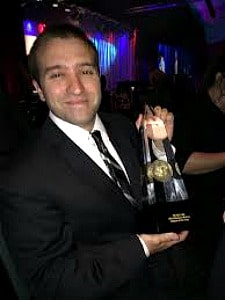
Over 100,000 people attending the 2016 NAB Show in Las Vegas may have been leaving their digital strategies to chance. Unfortunately, too many stations and personalities are still rolling the dice with their properties and hoping for the best. (Sorry for the Vegas puns!)
It takes a bright digital mind to break down the digital divide. Kim Komando was one of the keynote speakers at the NAB Show, and she’s known as “America’s Digital Goddess” for a reason. Her expertise and common sense have grown WestStar Multimedia Entertainment to nearly 500 radio affiliates. She’s launched a podcast network, offers premium content through her “Kim’s Club,” and employs around 40 people for more than just radio: She also has a popular website and live high-definition streaming productions. And she’s saying we need to start thinking about multimedia in a whole new way. “I’m relentless in what I do,” says Komando. “I approach my business in the same way. If you’re a radio station, you have to figure out what is going to be your place, where do you take that audience, and how do you build on that audience?”
You may be the master of your market, but there are battles across other domains that you should be fighting (and winning). How are you presenting your station and personalities on Facebook, Twitter, YouTube, podcasts, and more? Luckily, your listeners are already there. Your job is to connect with them and offer them the content they’re looking for.
As Komando says, “You want to make sure you’re building that loyalty.” She says an easy way to dip your toe into the endless digital ocean is by taking your e-mail database seriously. “Start collecting e-mail addresses — maybe it’s through a contest,” she says. “It’s about creating that presence of mind that this is the radio station that’s in my hometown, and it’s where my loyalty falls.” The art of using an e-mail database has fallen by the wayside for many stations. It seems like a popular outreach from a decade ago, but studies show that when used effectively, it’s still very powerful, both for the station and for clients. (But be professional: You can’t use it as a way to exploit your audience.)
Much like your other digital properties, you have to treat everything online as something more than a valueadded enterprise. If a client isn’t satisfied with an on-air campaign, your first instinct shouldn’t be to give them something else for free. “Let’s look at the message,” Komando advises. “What are they saying? Why aren’t people responding? You hear it on the radio and you see something about it on the website. You open your newsletter and you see something else about it. You listen to a podcast and hear about it,” ultimately using all your tools in sync.
When it comes to podcasting, Komando knows her audience and caters to them. And she says it’s important to maintain a high production value: “Either we do it right, or we just don’t do it at all.”
There are a lot of stations and individual talents trying to find what works best for them. We won’t have the research and development budget that a large network would have, but what we do have is the most talented communicators and entertainers. Hopefully, you’ll also have passion on your side.
Power is with the station that has a relationship with its listeners. It’s not a secret that the stations with the most success have given their listeners a reason to keep a close companionship. Too often we’re caught in a trap, thinking on-air content is enough to build a digital relationship with listeners — and maybe that’s why your digital strategy isn’t living up to its full potential.





